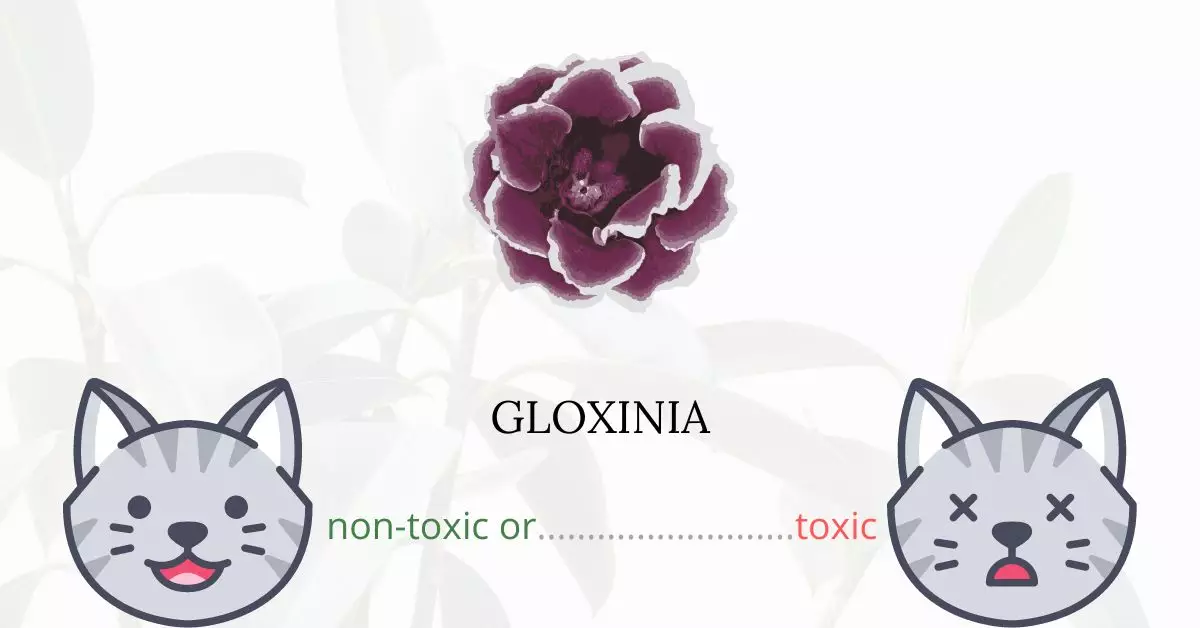Gloxinia, a plant known for its beautiful petals, is not toxic to cats.
This article was written in collaboration with a team of experienced DVMs (doctors of veterinary medicine). Leveraging their expertise, along with comprehensive research from high-authority websites such as the ASPCA and PetMD, we ensure that the information provided here is accurate and up-to-date concerning the potential risks associated with Gloxinia and its effects on cats.
Rest assured, Gloxinia can be considered a safe gift choice for homes with feline companions.
Can Cats Eat Gloxinia?
Gloxinia is not only lovely but also highly safe for your cats. There is no need to be concerned; occasionally, she might try to munch a few plants. But if you can, try to keep your gloxinia away from your cats. As obligate carnivores, cats’ gastrointestinal systems and metabolism have been built to suit consuming meat. They struggle to digest plant matter and need the critical nutrients that only meat can give them.
What is Gloxinia?
Gloxinia (Sinningia speciosa) is a member of the Gesneriaceae family and is a perennial flowering plant. Gloxinias are now frequently grown as indoor and garden plants. They are native to Brazil.
Their big, tubular, or bell-shaped flowers are surrounded by lovely leaves with a smooth, velvety feel, and they reach heights of 15 to 30 cm (6 to 12 inches). The flowers are distinguished by their depth and variety of coloration, which spans from pink and scarlet to white and includes shades of blue and purple. Gloxinias have oval or oblong leaves with serrated margins and tuberous roots.
It is related to the African violet and is frequently offered for sale in late winter and early spring at floral shops and greenhouses. Plants should be placed in a well-lit area of the house. Temperatures between 65 and 75 degrees Fahrenheit are ideal for gloxinias.
After flowering, most gloxinias are discarded. If given the right care, plants can be encouraged to blossom once more. Gloxinias require resting following blooming.
Keeping Cats Away From Gloxinia
Due to their natural curiosity, cats will hunt everything that moves. They strike when the fronds or leaves taunt them. Sometimes they just enjoy digging holes, but what’s worse is when they feces in your planter.
Possessing a water spray bottle close at hand is the finest training method to prevent cats from eating indoor plants. Since cats don’t like having water on them, all you have to do is spritz them.
The quickest fix is to relocate your damaged plants out of reach. Use plant hangers suspended from the ceiling or try creating floating shelves. In contrast, it could be advisable to store heavy plants in a room that is off-limits.
Alternately, you may erect a physical barrier to keep cats out of your potted plants. To stop cats from digging, there are other options, such as covering the plant’s base with mulch or stone.
Plants to Avoid For Your Cats
If you are a cat owner and unsure if the plants growing in your yard are harmful to your cats, check out this list of toxic plants for cats. You can also check our list of non-toxic plants for cats.





